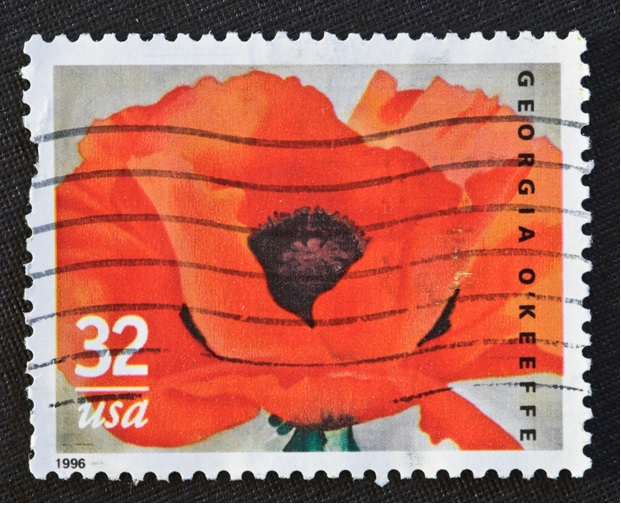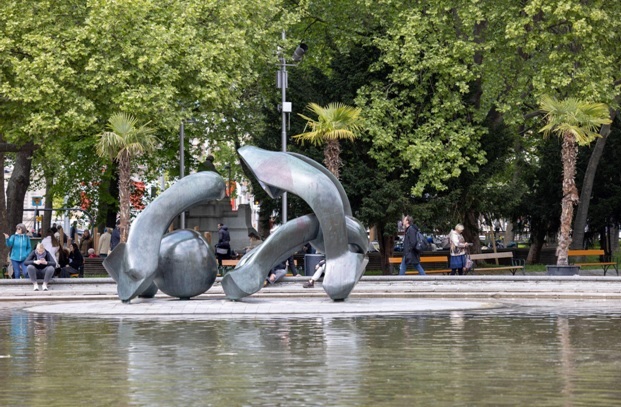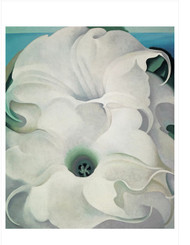Henry Moore and Georgia O’Keeffe: World’s Apart, Visions Align
Sep 13th 2024
Artists do not live in a bubble, and neither do their works exist alienated. John Donne’s observation that No Man Is an Island is not just about grief and likeness; it is true that we all, artists and laymen, exist in this world together, seeing the same things, though we often interpret them differently.
Beginning in October 2024, running through January 2025, we will be exhibiting some of the finest representative works of Georgia O’Keeffe and Henry Moore, and many of the pieces that will be on display are MFA exclusives. Here’s a sneak preview into what to expect.
Georgia O’Keeffe’s Art

Georgia O’Keeffe, the “Mother of American Modernism,” was one of the most influential and impactful American artists of the 20th century, in part because her art remained largely independent of prevalent contemporary schools of art.
O’Keeffe’s early work was a mix of abstractions, some of which were inspired by landscapes; after which her style began to take on a form that would become, and which remains most familiar to most who know her name: simplified representations of natural objects, many of which were flowers.
Far and away, O’Keeffe is best known for her simplistic yet timelessly alluring depictions of flowers, of which she made over 200. These paintings represent and reflect O’Keeffe’s feelings about the simplicity of life and the emotional impact of music. It has been stated that she utilized a unique fusion of both bold and muted colors to impress vibrantly on the viewer. It has been remarked that her portrayal of flowers is a metaphoric representation of the beauty of the essence of femininity.
Interestingly, this period of her work, during which she predominantly produced images of flowers, was also punctuated by visual impressions of other natural motifs, such as rocks and foliage.
As she continued to explore her artistic inclinations, later in her career she produced a series of works reflecting New York skyscrapers and the city skyline; in the 1930s and 1940s, she traveled through and stayed in New Mexico, during which time she produced a series of abstractions reflecting desert landscapes and motifs.
Yet, her flower paintings remain her most enduring and significant works, as well as her most popular. The large scale of her flower paintings give the impression of an exaggerated magnification, wherein live the beauty and simplicity of these unique aspects of botanical anatomy.
Regardless of the interpretation we or academics would like to extract from her corpus of work, one thing is divorced from subjective analysis: O’Keeffe’s entire portfolio of art reflects a deep appreciation for the environments in which she found herself, from New York to New Mexico.
Henry Moore’s Art

Henry Moore was a contemporary of O’Keeffe’s although his story is one that must be told from the other side of the world; and, where O’Keeffe’s catalog of creations was largely in charcoal, oil, watercolors and pastels and in two dimensions, Moore’s reflected reality in three. While Moore produced a variety of drawings over his long career, it is as a sculptor that he is best known.
Many of his sculptures, like O’Keeffe’s early work, are abstractions that exhibit varying degrees of likeness to human form. Some are nearly immediately recognizable, others require a bit of reflection and a familiarity with the overarching corpus of his work to see the likeness.
Some of his best-known sculptures are bronze sculptures which are publicly displayed around the world in locations such as Glenkiln, Scotland (King and Queen, though it has since been removed from view), Chicago (Large Interior Form), and Tel Aviv, Israel (Reclining Figure).
Many of his sculptures seem to depict recumbent or semi-recumbent figures that are either humanoid or somewhat reminiscent (as indicated by the name of the last piece mentioned). While it has been observed that some of his sculptures seem to capture the undulations of the hills of his Yorkshire home, it has also been said that many of them are somewhat feminine in nature and stature.
This would give his art some common ground with many of O’Keeffe’s work, particularly her flower paintings. What Moore’s sculpture lacks in realism it regains in the fluid undulations that typify both his and O’Keeffe’s work, particularly her likenesses of flowers and foliage.
More than the fact that his sculptures seem to reflect both the landscape of his home as well as the feminine form, they blur the lines between the past and present. A quick glimpse of one of his sculptures might leave the impression of a weathered, worn thing from the ancient past. In that way Moore has created an indelible fusion of what was and what is, immortalizing it in bronze.
Methodologies of Comparison
It is arguably in abstraction that Moore and O’Keeffe, contemporaries though separated by the sea, share their most recognizable common ground. O’Keeffe’s early abstractions matured into less-evidently abstract though still generalized impressions of flowers and leaves, Moore’s from early abstractions of reclining forms to still yet-more abstract geometric impressions with vague insinuations of human semblance. Despite the fact that they worked primarily in different media from each other, the similarities of the influences that moved them are all but tangible. Both magnified in scale, both deeply inspired by the environments in which the two found themselves.
Yet, the greatest impression to be gathered here is to witness the likeness of their works in an exhibition that juxtaposes them. For that, you must wait only a few months.
Visit Our Museum Store and Claim Some of the Magic for Yourself
Even if you’re unable to visit our exhibition, you can still peruse the exquisite collection of our museum store and take home a piece of the inspiration of Moore or O’Keeffe for yourself, or even to make a gift of it.
Make sure also to check out our collection of O’Keeffe and Moore art-inspired gifts, which contains gems like Abstract Flowers Notecards, Red Canna Puzzles, several wall calendars, and, of particular importance, our “O’Keeffe and Moore” exhibition catalog.
Be on the lookout for unique gifts in our museum store inspired by these artists, from art cards to art puzzles, books and folios, and capture for yourself some of the timeless essence of two of the most impactful artists of the 20th century.

